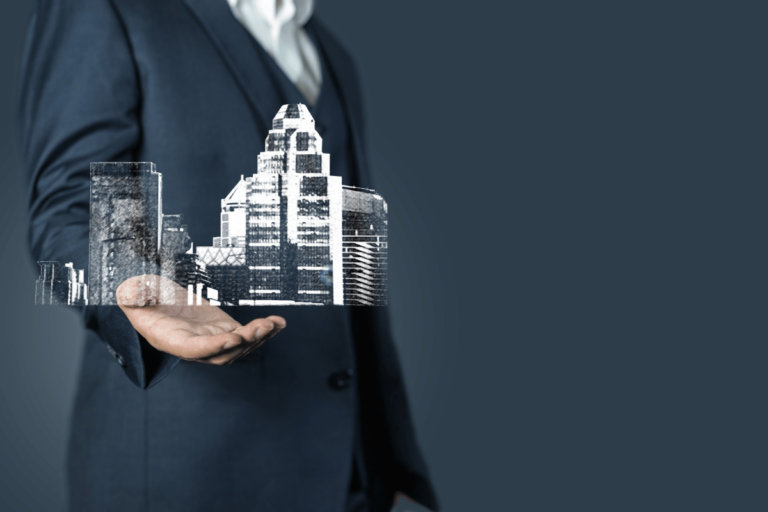DeFi Deep Dive: Is Crypto the Future of Finance (Or a Scam?)
About $13 billion has been put into DeFi projects since they started. This shows us a big change in how we think about managing our money. Is decentralized finance, or DeFi, building the future of money management? Or is it just a fancy trick? Crypto is at the heart of DeFi. It’s a kind of money that’s both exciting and a bit risky.
With both excitement and doubt, DeFi could change how we save, lend, invest, and pay for things. It’s a step away from old-school banks. Is this really showing how tough and creative the finance world can be? Or will it just fade away, forgotten on the internet?
Key Takeaways
- Discover the transformative potential of DeFi and its growing impact on the financial landscape.
- Explore how decentralized finance challenges traditional financial systems with its unique approach to autonomy and transparency.
- Gain insight into the importance of crypto in enabling DeFi platforms and whether it embodies the true future of finance.
- Examine the critiques labeling DeFi as a scam, underscoring the importance of discernment in emerging financial technologies.
- Understand the balance between innovation and risk that comes with the adoption of DeFi systems.
Understanding the Basics of DeFi
Decentralized finance, or DeFi, is changing how we think about money and services. It uses the latest blockchain technology. This lets DeFi go beyond old bank methods, offering a clearer and fairer money world. “Basics of DeFi” covers many new methods and products that are changing finance.
Defining Decentralized Finance (DeFi)
DeFi means reimagining our financial systems. It works without a central control, using blockchain’s security and flexibility. With autonomy at its heart, DeFi uses smart contracts on platforms like Ethereum. This creates a new world of financial services, including banking, insurance, and asset trading.
The Pillars of DeFi: Blockchain and Ethereum
Blockchain is the key to decentralized finance. It is a secure and unchangeable record-keeper for all DeFi applications. On Ethereum’s blockchain, developers can build complex financial products. Ethereum has fueled DeFi’s rapid growth with its smart contracts and strong developer community.
Accessibility and Transparency: Core Values of DeFi
At the heart of DeFi are accessibility and transparency. It aims to make finance available to everyone, everywhere. As long as you have a blockchain connection, you can join in. Blockchain’s clear nature ensures all transactions are open and recorded. This builds trust and invites everyone to take part.
These key aspects of DeFi change the financial world with new opportunities. Below, see how traditional finance and DeFi compare:
| Feature | Traditional Finance | Decentralized Finance (DeFi) |
|---|---|---|
| Transparency | Limited by privacy policies and corporate interests | Complete transparency with public transaction records |
| Accessibility | Often restricted by geographic and institutional barriers | Open to anyone with internet access |
| Intermediaries | Requires banks and other financial institutions | Peer-to-peer interactions without the need for intermediaries |
| Innovation | Constrained by traditional business models | Encouraged by open-source ethos and collaborative development |
| Fees | Higher fees due to intermediaries | Lower to no fees due to elimination of middlemen |
This guide to DeFi basics shows how blockchain and Ethereum are making finance more open and clear for everyone.
Exploring the Uncharted Advantages of DeFi
The finance world is changing fast, thanks to decentralized finance (DeFi). It offers new ways to handle money, invest, and own assets. It’s crucial for investors and anyone interested to understand what DeFi brings to the table. Let’s look at the key features making DeFi a game-changer in finance.
Permissionless Access and Improved Financial Inclusion: A key DeFi benefit is permissionless access to finance. This means anyone with internet can use it without traditional barriers. It opens doors for better financial inclusion, helping those in areas with limited banking access.
- Automated smart contracts reduce the need for intermediaries, thereby enhancing transparency and reducing costs.
- Accessibility around the clock, unaffected by traditional banking hours or geographic limitations.
Innovation Through Open Protocols: DeFi’s use of open protocols and blockchain is a big plus. It lets innovators quickly develop new financial products. This promotes faster innovation and brings a constant stream of new DeFi services.
DeFi stands as a beacon of innovation in the financial industry, providing a springboard for new economic models and democratizing access to finance.
Joining the DeFi world offers access to global markets and governance participation via DAOs. It also provides better security through blockchain’s transparency. The perks of DeFi are real and changing how we view money and investment. DeFi enables users to be active creators in a fairer financial system.
Decentralized Finance (DeFi)
DeFi is changing how we access finance services, making them available to everyone. It uses new tech and ways to do things differently from traditional finance. A key part of DeFi is the decentralized exchange or DEX.
Decentralized Exchanges (DEXs) and Their Role
Decentralized exchanges (DEXs) let people trade cryptocurrencies directly without needing a middleman. They decrease the chance of losing money through hacks and make trading more transparent. This is great for those who want to keep their trading private and have full control over their money.
Lending and Borrowing Dynamics in DeFi
Lending and borrowing in DeFi are not like in regular banks. Everything is done by smart contracts, so there’s no middleman. People can lend their digital assets or borrow against them easily. This helps make finance more open to everyone and allows for new ways to lend money.
The Stability Offered by Stablecoins
Stablecoins are important in DeFi because they provide a constant value. They are tied to stable assets like the US dollar. Stablecoins allow for everyday use of digital money and offer a calm spot for traders during market ups and downs.
Yield Farming and Liquidity Mining Explored
Yield farming and liquidity mining are exciting parts of DeFi, giving rewards for staking or lending assets. Yield farming helps you earn without doing much, and liquidity mining rewards you for adding liquidity. This keeps the DeFi market active and growing.
Understanding Decentralized Autonomous Organizations (DAOs)
Decentralized autonomous organizations (DAOs) are at the forefront of making DeFi truly governed by its users. They use blockchain to let everyone in the community have a say. This way, decisions are made fairly and openly.
| Component | Functionality | Benefits |
|---|---|---|
| DEXs | Peer-to-peer trading without intermediaries | Increased security, privacy |
| Lending & Borrowing | Permissionless loans secured by smart contracts | Accessibility, innovative lending strategies |
| Stablecoins | Stable value currency in DeFi | Reduction of volatility risks, daily transactions |
| Yield Farming & Liquidity Mining | Incentivizing asset staking & liquidity provision | Passive income, enhanced liquidity |
| DAOs | Decentralized governance models | Transparent decision-making, community control |
Financial Inclusion: Breaking the Barriers with DeFi
DeFi is changing the financial world, making it possible for everyone to have financial access. It shows us a future where finance isn’t limited to a few. DeFi uses the internet and blockchain to let anyone use financial services.
Many people couldn’t use traditional banks due to various barriers. These included having no documents or living too far from a bank. Now, DeFi is changing this. It’s giving financial tools to those who didn’t have them before. This change isn’t just an idea; it’s real and happening now.
DeFi embodies the ethos of ‘finance for all’, smashing the door wide open for financial participation without prejudice or economic barriers, thereby fostering true financial inclusion.
Let’s compare traditional banking with DeFi. This will show how DeFi is making finance more inclusive:
| Aspect | Traditional Banking | DeFi |
|---|---|---|
| Accessibility | Limited to banking hours and branch availability | Available 24/7 from anywhere with internet access |
| Documentation Requirements | High – Requires formal ID, proof of address, and often a credit history | Low to None – Typically just requires a digital wallet address |
| Service Fees | Often high, especially for international transactions | Much lower, enabling micro-transactions and better terms for loans |
| Financial Products Offered | Limited based on risk profiles and economic status | Wide array, including innovative products not found in traditional finance |
| Inclusivity | Excludes many marginalized groups and individuals without bank accounts | Inclusive to anyone, even those who are unbanked or underbanked |
When we look at these differences, it’s clear DeFi is promoting financial inclusion. It’s making finance fair for all. This shift towards fairness and growth makes DeFi crucial for people worldwide.
DeFi is not just a new fad; it’s essential for global financial inclusion. It shows how technology can change our view of money and financial control. By embracing DeFi, we’re moving into a new era. In this era, democratizing finance is real for billions.
A New Era of Lowered Fees Through Decentralized Finance
Decentralized finance, known as DeFi, is changing the game in financial fees. Unlike old financial systems with lots of fees, DeFi uses blockchain technology to cut extra costs. This leads to lowered fees in DeFi, a big plus over traditional finance.
Cost savings in decentralized finance mean getting rid of many middleman fees. In DeFi, smart contracts help parties make direct deals without banks or brokers. This cuts costs and speeds things up, benefiting everyone who values their time and money.
DeFi platforms use blockchain to work all the time, lowering the need for traditional banking hours and staff. This constant service reduces costs, aiding in cost savings in decentralized finance.
Here is a comparison of fees between traditional and DeFi transactions:
| Service | Traditional Finance Fees | DeFi Transaction Fees | Fee Reduction |
|---|---|---|---|
| Money Transfer | Varies by amount and region | Gas fees (varies by network load) | Often much lower |
| Trading | Brokerage fees + spread cost | Network fees + potentially lower spread | Greatly minimized |
| Lending/Borrowing | Origination fees + Interest rate markups | Interest rate set by protocol algorithm | No origination fees, better rates possible |
| Asset Management | Management fees (percentage of asset) | Minimal to no fees | Huge reduction |
The lowered fees in DeFi have a big impact, helping both experienced and new investors. As DeFi grows and more users come in, its cost-saving ways will change how we deal with money worldwide. This marks the start of an affordable and open financial future.
Fostering Rapid Innovation and Globalization within DeFi
Decentralized finance (DeFi) is changing the game in tech and finance. It’s fast-paced and brings together a global economy. This mix of new tech and teamwork makes DeFi unique. It focuses on being open and innovative.
The Impact of Open-Source Development on DeFi Innovation
Open-source development is key to DeFi’s growth. It allows anyone, anywhere, to improve financial tools. This approach makes DeFi stronger and closer to the user’s needs. It encourages developers to add to others’ ideas, speeding up progress.
DeFi: Paving the Way for Global Financial Integration
DeFi leads the charge in global financial unity. It breaks down walls, letting different financial areas work together. Thanks mainly to blockchain, it offers worldwide access to its tools. DeFi is a worldwide shift towards more connected and fair finance.
Here’s how traditional finance and DeFi compare, showing big changes and steps towards global unity thanks to DeFi.
| Traditional Finance | DeFi Ecosystem |
|---|---|
| Centralized structures | Decentralized protocols |
| Geographically limited services | Global access without boundaries |
| Slow cross-border transactions | Instant, peer-to-peer settlements |
| Restricted participation | Inclusive and permissionless involvement |
| Opaque governance | Transparent and community-driven governance |
Navigating the Risks and Challenges in DeFi
The world of decentralized finance is known for its innovation. But it is also filled with risks in DeFi and challenges of decentralized finance. Investors and developers need to be aware and understand these risks. It’s crucial for anyone diving into these volatile waters. Let’s explore the main concerns and how to protect against potential losses.
Smart Contract Vulnerabilities: A Double-Edged Sword
Smart contract vulnerabilities bring both promise and peril. These contracts are central to DeFi’s groundbreaking capabilities. They automate and enforce agreements on the blockchain. But, they can also be exploited due to code flaws or logic errors. This can cause big financial losses. So, there’s a huge need for strong security measures and audits to keep DeFi safe.
The Evolving Landscape of DeFi Regulations
Until now, DeFi has operated outside traditional regulations. Yet, with its growth, DeFi regulations are drawing attention from policymakers across the globe. It’s important for DeFi participants to keep up with these changes. They need to be compliant but also flexible.
Understanding Impermanent Loss in DeFi Investing
Impermanent loss is unique to DeFi. It occurs when the price ratio of assets in a liquidity pool changes. This risk can reduce profits or increase losses, especially when the market is unstable. Investors need to learn about liquidity pools and what causes impermanent loss.
Protecting Against DeFi Scams and Rug Pulls
With DeFi becoming more popular, scams and ‘rug pulls’ are also on the rise. In ‘rug pulls’, developers take investors’ money and disappear. Doing your homework, understanding project protocols, and knowing scam signs can protect you from these bad actors.
The Volatile Nature of DeFi Markets
The promise of high returns in DeFi comes with high risk. Prices can change quickly, influenced by many factors. To handle these risks, it’s wise to understand the market. Strategies like diversification and setting stop-loss orders can help manage the risk.
In closing, DeFi offers great opportunities but also comes with big challenges and risks. Dealing with smart contract vulnerabilities, adapting to DeFi regulations, preventing impermanent loss, avoiding protecting against scams, and handling volatile DeFi markets requires careful planning and caution. Everyone in the DeFi space must be well-informed and careful.
The Shape of DeFi Within the Current Regulatory Framework
DeFi, or decentralized finance, is growing fast and bringing new ideas to life. But, it faces big questions about DeFi and regulations. Mixing DeFi with old rules is tricky. People around the world are trying hard to make it fit.
The goal of DeFi is to open finance to everyone, making it fair. But, fitting it into legal rules is hard. There’s a big struggle happening. On one side, DeFi projects want to keep their freedom while following the law. On the other side, regulators want to protect people and keep finance stable, without stopping new ideas.
| Aspect of DeFi | Regulatory Challenges | Potential Solutions |
|---|---|---|
| Token Classification | Defining tokens as securities, commodities, or currencies. | Clear guidelines and precedence for token classification. |
| AML and KYC | Implementing Anti-Money Laundering (AML) and Know Your Customer (KYC) in a decentralized context. | Developing identity verification tools that respect privacy while meeting regulatory standards. |
| Taxation | Addressing the complexities of taxing DeFi transactions and yield farming activities. | Simplified tax reporting mechanisms adapted to the unique nature of DeFi services. |
| Consumer Protection | Ensuring user protection without access barriers in a permissionless system. | Frameworks for dispute resolution and user education initiatives. |
| Transparency and Reporting | Creating standards for transparent reporting in a sector where anonymity is prevalent. | Smart contract audits and real-time reporting protocols. |
To sum it up, the world of DeFi and regulations is constantly evolving.
People in DeFi need to work with regulators. This way, we can keep DeFi open and fair, while also making sure it’s safe and legal. Finding a balance between freedom and rules could help DeFi grow rightly.
DeFi in Practice: Real-World Applications and Use Cases
Decentralized Finance, also called DeFi, is changing how the world handles money. It introduces real-world applications of DeFi that challenge the old ways of finance. This technology isn’t just an idea; it’s changing the finance world today with key DeFi use cases.
Disrupting the Lending and Borrowing Markets with DeFi
DeFi in lending and borrowing is changing things in big ways. By using smart contracts and decentralized networks, it removes the middlemen. This makes getting loans easier and more open for people everywhere. It gives better access to money and offers more fair interest rates. This is good for both people lending money and those borrowing it.
Platforms like Compound and Aave have transformed lending. They let users earn interest on their cryptocurrency or get loans using their digital assets as security. Over-collateralization keeps these platforms safe. Also, transactions happen instantly, adding convenience like never before.
Liquidity Provision on Decentralized Platforms
Liquidity provision is key in DeFi. Liquidity provision on decentralized platforms lets participants add their assets to liquidity pools. They get rewarded with transaction fees or tokens, a popular approach known as yield farming. This benefits those providing liquidity and strengthens the platform by ensuring enough liquidity for easy trading and lending.
Decentralized exchanges like Uniswap and SushiSwap show how these liquidity pools work. Here, anyone can help by adding tokens to a pool, supporting the DeFi market’s transactions. This role is vital for keeping decentralized marketplaces efficient and flowing smoothly.
In closing, real-world applications of DeFi are expanding and showing the future of finance. It can be more open, clear, and efficient. With DeFi use cases in lending and borrowing, and liquidity provision on decentralized platforms, we’re at the start of a financial shift. This shift could give more power to people and change how we view money in our digital world.
DeFi: The Visionary’s Sustainable Financial Frontier or a Speculative Bubble?
Decentralized Finance (DeFi) has changed the finance world, starting a new way of handling money and power. Discussions about DeFi’s sustainability are growing as it becomes more popular. People have divided opinions on this topic.
Some worry about DeFi’s future. They point out issues like scalability, possible legal issues, and environmental concerns. Yet, DeFi is still in early stages. The problems it faces now could help it grow stronger.
Critiquing DeFi’s Viability and Long-Term Sustainability
The critique of DeFi focuses on its market volatility and new regulations. Some wonder if it can truly go mainstream. They worry about the safety of smart contracts and the risk of too much collateral.
Yet, supporters believe in DeFi’s core values of decentralization and open-source development. They say these principles lead to better security and more fair finance options.
Analyzing Expert Opinions on the Future of DeFi
Many experts think DeFi has the power to change finance despite the doubts. They see it as a big step forward. It gives people more control over their money and creates equal opportunities.
Experts suggest that new tech like layer 2 solutions and blockchain interoperability could solve DeFi’s current issues. This would make DeFi a stronger and more scalable financial option.
The discussion on DeFi is deep and thought-provoking. Yes, it faces big hurdles. But this groundbreaking technology has the potential to grow into a flexible and lasting financial system for our digital world.
DeFi Fraud: Detection, Prevention, and the Road Ahead
The DeFi world is full of new chances and growth. But, it’s also open to fraud. We’re diving into DeFi fraud threats and how to fight them. We’ll look at what’s coming and how we can make DeFi safer for everyone.
DeFi works without central oversight, using smart contracts. This makes it easy for scammers to take advantage. Types of fraud include code issues, phishing, and more complex attacks. Everyone must stay alert and informed.
“The key to fostering a secure DeFi environment lies in education, robust security practices, and the development of advanced tools for fraud detection.”
To stop detecting and preventing fraud in DeFi, experts are creating strategies. They use contract audits, awareness campaigns, and monitoring tools against fraud.
- Education and User Awareness: It’s key to teach users how to spot scams and risks.
- Smart Contract Audits: Checking contracts before launch can uncover and fix flaws.
- Monitoring and Analysis Tools: Tools to watch for and alert about suspicious actions help stop fraud.
- Regulatory Frameworks: Clear rules help fight DeFi fraud by setting legal standards.
The DeFi scene is always changing. New platforms appear all the time. Our security methods must evolve too. Everyone must work together to keep DeFi safe.
DeFi fraud can’t be stopped completely. But, our collective effort can build a safer, trusty DeFi world. By improving fraud detection strategies and promoting responsibility, we’re setting the stage for a secure DeFi future.
Conclusion
As we’ve looked into decentralized finance (DeFi), a main question remains: Is DeFi the future of finance or a risky scam? Our study shows DeFi offers chances for more freedom, clarity, and fairness. However, it also brings risks and legal challenges. It promises to make finance more open, fighting issues like high fees and hard-to-reach services.
DeFi might truly change how finance works, with supporters excited about a new free financial era. But, it’s also full of uncertain risks. There are fears of fraud and tricky legal issues to think about. So, DeFi is seen as a powerful change maker that still needs to grow. It has to carefully move through the complicated world finance is today.
In the end, DeFi is not just one simple idea but has many sides where big possibilities and major challenges live together. It’s not just a yes or no question about DeFi being the future of finance. It’s more about understanding its changes over time. As DeFi could mark a new start in finance, everyone involved needs to think deeply and positively. This way, they can make the most out of DeFi while keeping an eye on the risks.
FAQ
What is decentralized finance (DeFi)?
How does blockchain technology enable DeFi?
What are the core values of DeFi?
What are the advantages and benefits of DeFi?
How do decentralized exchanges (DEXs) enable peer-to-peer trading in DeFi?
How does lending and borrowing work in DeFi?
What are stablecoins and why are they important in DeFi?
What is yield farming and liquidity mining in DeFi?
What are decentralized autonomous organizations (DAOs) in DeFi?
How does DeFi promote financial inclusion?
How does DeFi reduce transaction costs compared to traditional financial systems?
How does DeFi foster rapid innovation and global financial integration?
What are the risks and challenges associated with DeFi?
How does DeFi fit within the current regulatory framework?
What are some practical applications and use cases of DeFi?
Is DeFi the future of finance or a speculative bubble?
How can fraud be detected and prevented in DeFi?
Source Links
- https://www.linkedin.com/pulse/decentralized-finance-defi-deep-dive-future-metamorph-holdings-atktf?trk=organization_guest_main-feed-card_feed-article-content
- https://www.mcglinchey.com/insights/introduction-a-deep-dive-into-defi-decentralized-finance/
- https://www.linkedin.com/pulse/decentralized-finance-defi-next-gen-fraud-scheme-ahmed-el-shamy-w8gde







